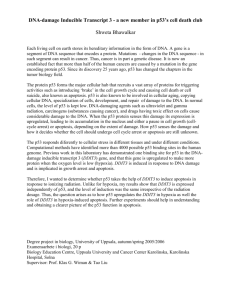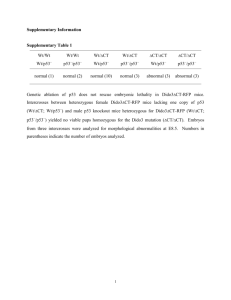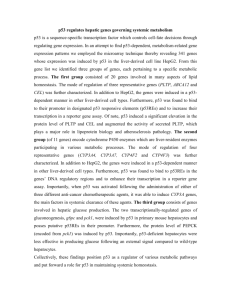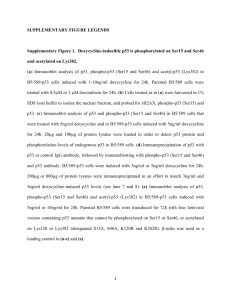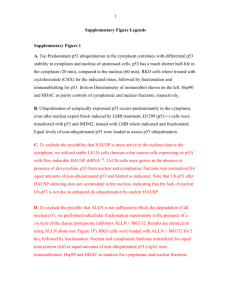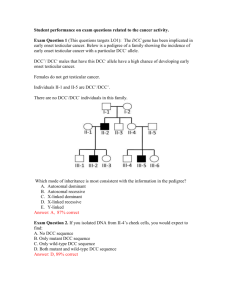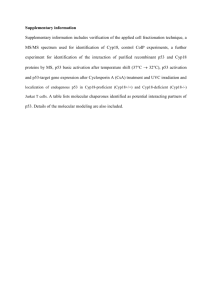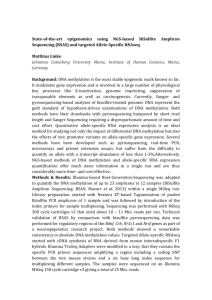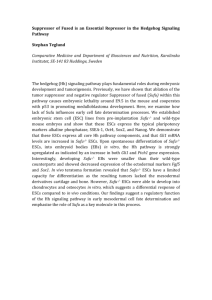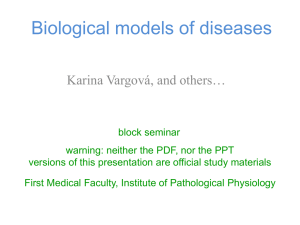Filomena Ferrentino MAT:1060100693
advertisement
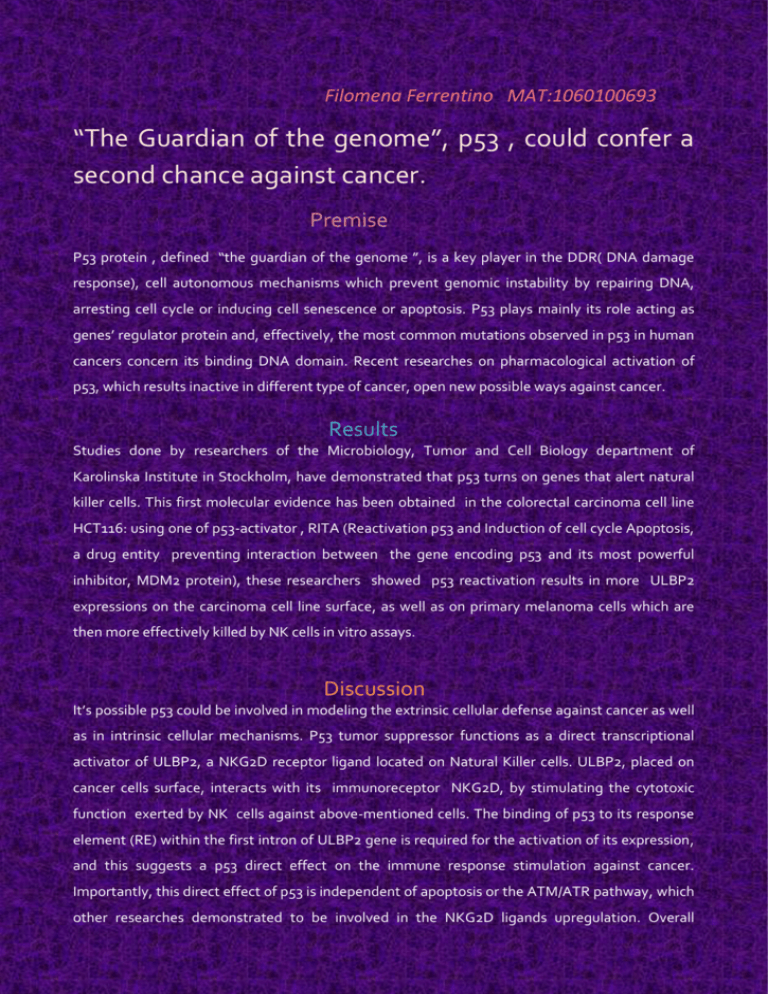
Filomena Ferrentino MAT:1060100693 “The Guardian of the genome”, p53 , could confer a second chance against cancer. Premise P53 protein , defined “the guardian of the genome ”, is a key player in the DDR( DNA damage response), cell autonomous mechanisms which prevent genomic instability by repairing DNA, arresting cell cycle or inducing cell senescence or apoptosis. P53 plays mainly its role acting as genes’ regulator protein and, effectively, the most common mutations observed in p53 in human cancers concern its binding DNA domain. Recent researches on pharmacological activation of p53, which results inactive in different type of cancer, open new possible ways against cancer. Results Studies done by researchers of the Microbiology, Tumor and Cell Biology department of Karolinska Institute in Stockholm, have demonstrated that p53 turns on genes that alert natural killer cells. This first molecular evidence has been obtained in the colorectal carcinoma cell line HCT116: using one of p53-activator , RITA (Reactivation p53 and Induction of cell cycle Apoptosis, a drug entity preventing interaction between the gene encoding p53 and its most powerful inhibitor, MDM2 protein), these researchers showed p53 reactivation results in more ULBP2 expressions on the carcinoma cell line surface, as well as on primary melanoma cells which are then more effectively killed by NK cells in vitro assays. Discussion It’s possible p53 could be involved in modeling the extrinsic cellular defense against cancer as well as in intrinsic cellular mechanisms. P53 tumor suppressor functions as a direct transcriptional activator of ULBP2, a NKG2D receptor ligand located on Natural Killer cells. ULBP2, placed on cancer cells surface, interacts with its immunoreceptor NKG2D, by stimulating the cytotoxic function exerted by NK cells against above-mentioned cells. The binding of p53 to its response element (RE) within the first intron of ULBP2 gene is required for the activation of its expression, and this suggests a p53 direct effect on the immune response stimulation against cancer. Importantly, this direct effect of p53 is independent of apoptosis or the ATM/ATR pathway, which other researches demonstrated to be involved in the NKG2D ligands upregulation. Overall researchers revealed that some p53-activating compounds may be valuable in cancer therapy, because a single drug target may engage multiple anticancer pathways simultaneously. In melanoma, for example, precancerous cells are held in check by the cell intrinsic DDR which can also alert the immune-system through an ATM/ART dependent and p53 independent pathway. When cancer progresses, loss of p53 function may lead to genomic instability as well as immunoevasion. Pharmacological reactivation of p53 may promote cancer regression by simultaneously restoring the DDR and by re-alerting NK cells. Next figure showed how the intrinsic cell response acts on precancerous cells and alerts immune system using ATM/ATR dependent pathway. With progress of cancers, loss of p53 function causes genomic instability together with immunoevasion for the loss of NK ligands expression. Thanks to p53 pharmacological reactivation you can obtain a cancer regression by simultaneously restoring the DDR and by re-alerting NK cells. Conclusions There are other studies ongoing to determinate p53 role in the ligands upregulation in other cells line. Independent co-discovery of novel mechanisms is the most straight forward way to validate new concepts! It’s therefore a new target for the pharmacological intervention and it’s crucial to study the impact of the different molecules on p53 partners and indentify them in order to maximize the potential combinatorial effect of the cell autonomous mechanisms induced by p53 and the NK-cell response triggered by p53 activation. References Guardian of the genome turns on genes that alert natural killer cells. Jean-Marc Doisne, Thomas Chin Che Tan and Francesco Colucci ; University of Cambridge Clinical School; Cambridge UK; University of Cambridge; Cambridge UK; http://dx.doi.org/10.4161/cc.10.22.18196 A novel facet of tumor suppression by p53: induction of tumor immunogenicity. Hai Li, Tadepally Lakshmikanth,Ennio Carbone and Galina Selivanova1, Department of Microbiology; Tumor and Cell Biology; Karolinska Institute; Stockholm, Sweden; Tumor Immunology Laboratory;Department of Experimental and Clinical Medicine; University of Catanzaro Magna Graecia; Catanzaro, Italy Tumor suppressors control ULBP2, an innate surface ligand of the lymphocyteimmune receptor NKG2D Anja Heinemann and Annette Paschen Department of Dermatology; University Hospital Essen; Essen, Germany

